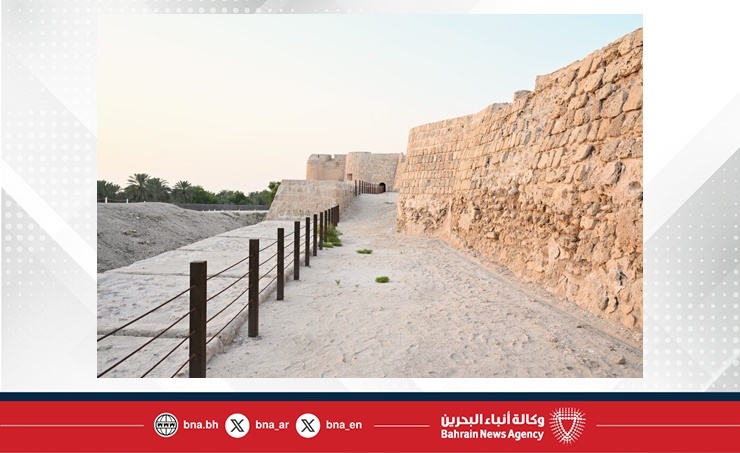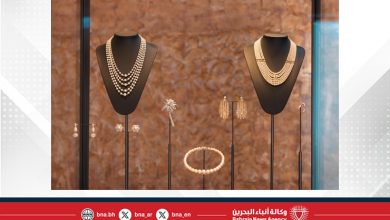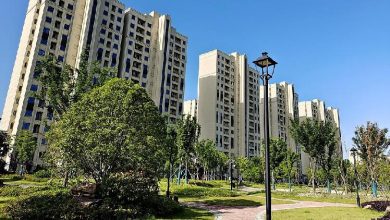A vivid testament to civilisation

“Dilmun, a sacred land.
Dilmun, a pure land.
*On this hallowed, pure land,
The raven does not caw,
And the lion does not prey on the lamb.
Let the wells of Dilmun
Be fresh water springs.
Let the fields of Dilmun
Yield wheat and grain.
Let the city of Dilmun
Become a harbour for the entire world.”
Manama, Aug. 21 (BNA): These verses from the Epic of Gilgamesh, inscribed in cuneiform on twelve clay tablets, echo the ancient significance of Dilmun. The cuneiform tablets were discovered in 1853.
Dilmun, the island of gods and the sacred land, was sought by Gilgamesh in his quest for the flower of eternity. On the highest hills of this island, by the shores of the Gulf, the capital of Dilmun was founded. Between the sand and the sea, the identity of Dilmun emerged, revealing a civilisation rich in archaeological treasures, waiting to be uncovered.
Bahrain Fort, known locally as Qal’at Al Bahrain, is not merely a military stronghold but a cornerstone of Bahrain’s rich cultural heritage. The fort, which dates back to approximately 2300 BC, was first brought to global attention through the pioneering excavations led by Danish archaeologist Geoffrey Bibby in 1953. These early explorations unveiled the fort as a significant archaeological site, shedding light on the Dilmun civilisation and its extensive connections with other ancient cultures. In 2005, the site was included in the UNESCO World Heritage List, solidifying its importance on an international scale.
As Dr. Salman Ahmed Al Mahari, Director of Antiquities and Museums at the Bahrain Authority for Culture and Antiquities, told BNA during a site tour: “This site reveals the historical uniqueness of Dilmun, where every layer uncovered tells a story from a different era, making Bahrain Fort an open book of history for the region.”
Historical Significance
Bahrain Fort is a site that encapsulates the essence of the Dilmun civilisation, one of the oldest known civilisations in the region. Dating back to around 2300 BC, the fort served as a vital hub for trade and cultural exchange, linking the Indus Valley, Mesopotamia, Oman, and even as far as China. The fort’s strategic location and its role as a capital and port for Dilmun highlight its importance in ancient times.
As Dr. Essa Amin, President of the Bahrain History and Archaeology Society, explained: “If we take a cross-section of the hill, we can observe various layers of human activity, each representing different historical periods from the Dilmun civilisation to the Islamic era and the Portuguese period. This vertical development of the site is a testament to its continuous occupation and importance through the ages.”
Dr. Essa Amin further elaborated on the fort’s layered history: “The design of the Bahrain Fort site museum was inspired by these historical layers, showing the vertical accumulation of civilisations. This design choice emphasises the continuous occupation and significance of this site throughout history.”
Archaeological Discoveries
Excavations at Bahrain Fort have been ongoing since 1953, revealing only 25% of the site so far. These efforts have uncovered a wealth of artefacts, including pottery, metalwork, inscriptions, and buildings, which provide a glimpse into the lives of the people who once inhabited this land. Notably, the discovery of one of the oldest known date molasses (dibs) processing facilities offers unique insights into the agricultural practices of the time.
The site is also remarkable for its layered history, with remains from six distinct historical periods: Early Dilmun, Middle Dilmun, Late Dilmun, Tylos, the Islamic era, and the Portuguese period. Each of these eras has left its mark on the fort, with structures built upon the foundations of earlier settlements, creating a rich tapestry of human history.
As Dr. Al Mahari explained: “The site represents an open book for the history of the region. Six historical periods, identified as six historical cities, are represented at the Bahrain Fort site. Human activity in this space has created layers of artefacts, with every civilisation building upon the remains of those before them.”
Dr. Al Mahari also highlighted the discovery of another significant site by the sea, older than the current fort, further demonstrating the depth and richness of the archaeological findings in the area.
Preservation Efforts
The Bahrain Authority for Culture and Antiquities (BACA) has been instrumental in preserving and promoting the fort’s heritage. One of the most significant projects has been the establishment of a visual corridor that extends seven kilometres into the shore, symbolising the fort’s historic connection to the sea. Additionally, efforts are underway to restore and repurpose 28 traditional houses surrounding the fort, transforming them into cultural centres that reflect the area’s archaeological value. These houses are owned by 28 families, and the restoration efforts will include the preservation of traditional crafts, such as the basket house, hospitality centres, and other craft houses. The area is also home to a factory producing traditional therapeutic herbal extracts, such as “laqah” and “marqadush.”
Dr. Salman Ahmed Al Mahari highlighted: “The integration of the site with its surroundings, including the preservation of traditional houses and the establishment of the visual corridor, underscores BACA’s commitment to maintaining the historical context and cultural significance of Bahrain Fort.”
Khalid Al Sindi, a heritage researcher, emphasised the site’s importance in solving a historical mystery that puzzled scholars for many years, related to the location of the Dilmun civilisation, which was mentioned in Sumerian and Akkadian documents without knowledge of its location. The search for Dilmun was supervised by the Eszgar Museum in Denmark and was aided by Geoffrey Bibby in 1953. At that time, there were no museums or similar institutions, but there was direct interest from the late ruler of Bahrain His Highness Shaikh Salman bin Hamad Al Khalifa, who directed the start of excavation work to search for Dilmun.
Al Sindi further explained that the Danish expedition placed Bahrain in its plan as a focal point for work. Dilmun, extending from Kuwait in the north to eastern Saudi Arabia, Qatar, and part of the UAE, found Bahrain, with the fort overlooking the Gulf, as an ideal site for excavation. There, they discovered the Dilmun port that the manuscripts spoke of as “wooden ships that came from the land of Dilmun.”
Visitor Engagement
Bahrain Fort is the most visited archaeological site in Bahrain, with over 415,000 visitors in 2023 alone. The site has seen more than 2.4 million visitors from 2009 to 2023, making it a major attraction for both tourists and researchers. The fort’s inclusion in various publications, documentaries, and cultural events has further cemented its status as a site of international importance.
As Dr. Salman Ahmed Al Mahari noted: “The high visitor numbers and the fort’s prominence in publications and cultural events underline its importance not just as an archaeological site, but as a cultural and educational hub for Bahrain and the world.”
Melanie Munzner, Archaeological Advisor at the Bahrain Authority for Culture and Antiquities, described Bahrain Fort as “a site of historical importance, where the ancient capital and port of Dilmun played a pivotal role in trade and cultural exchanges across the region. Its significance is not only reflected in the fort’s architecture but also in the thriving palm groves and ancient sea channels that surround it.”
Publications and Studies
Bahrain Fort has been the subject of extensive research and documentation. There are eight publications available in multiple languages, including Arabic, French, and English, detailing the fort’s history and significance. These studies, alongside numerous documentaries and cultural events, have played a crucial role in bringing Bahrain Fort to the global stage.
Bahrain Fort is a living narrative of the region’s past and a reflection of the culture and identity of Bahrainis. As a reflection of the identity and culture of Bahrainis, the site continues to be a focal point for archaeological research and cultural preservation, remaining a beacon of Bahrain’s rich heritage and a source of national pride. The ongoing efforts to uncover, preserve, and share the fort’s history ensure that its legacy will continue to inspire generations to come.





